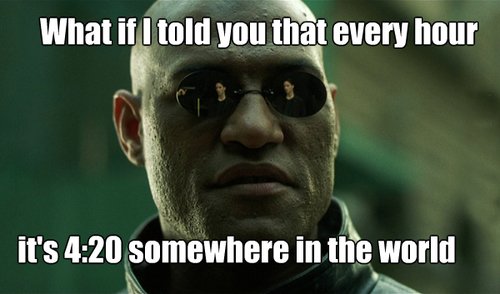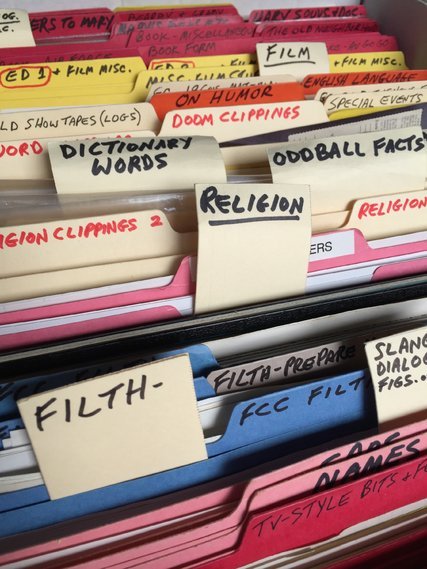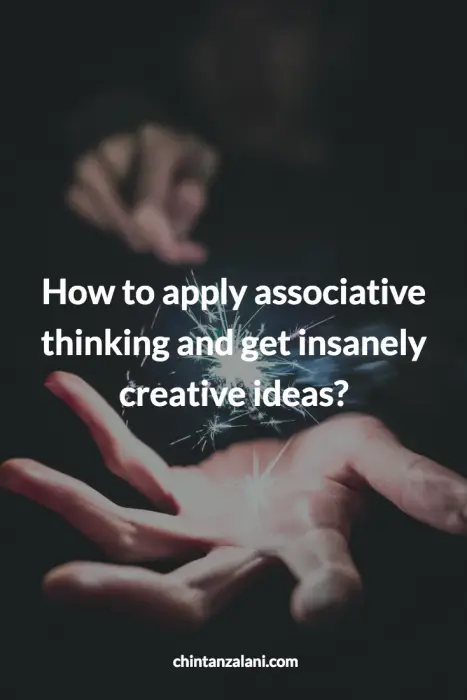My high school science teacher used to shout “hello” in her shrill voice for calling our attention. Her irritating demeanor aside, she encouraged us to think logically, avoid ambiguity, and arrive at a definitive answer.
It made sense because science is about reason, after all.
Similarly, in life, we’re conditioned to view the world through the binary lens of right and wrong. As a child, I remember how I felt bad when I met an atheist.
Let’s fast forward to my method acting training at the Jeff Goldberg Studio last year. The major skills I learned in my time there was empathy and letting go of linear thinking.
Think of the last time you were faced with making an important decision…
You likely defaulted to a convergent line of thought defaulting towards solving the “problem” at hand.
But all aspects of life can’t be funneled into cause and effect. That’s why we use correlations as our guiding lights. So here’s a mode of thinking to get your juices flow and become insanely efficient.
It’s helped me to write 2000+ word articles, short scripts, songs, and what not. I came across its technical name only recently:
Associative Thinking.
Let’s begin with answering the simple question…
What is Associative Thinking?
It’s the ability to form associations between seemingly unrelated ideas.
It tends not to have a direction; neither have a goal.
(Aka majority of our “real life”).
Most of our fears, doubts, hopes, and ambitions don’t take birth with a targeted direction.
On certain days, your mind might get primmed by something as simple as the image of a pale blue colored two-legged rhinoceros to a word from my article on refreshing your vocabulary.
Another example is how Shreya Dalela from The Creatives Hour combined ideas of home DIY projects and quarantite to write this article.
Going back to my method acting course:
We actors were exposed to memory exercises for triggering emotions based on our life experiences.
For instance: Something as simple as a familiar fragrance can transport you to the memories with your (ex)special someone. The memory you recall will, in turn, evoke emotions.
Let me throw another common example.
Ever hung out with 4:20 guys tripping out on Winamp visualizations and purple colored light bulbs?

I’ve been there.
After rolling the paper and dropping inhibitions, these 4:20 guys can form haywire connections. My friend formed a connection between the presence of clouds in a melody we were listening to and them floating on the clouds of Uranus.
What’s surprising though is such associations are limited in the real world. Because you rarely engage in a free-flowing state of fantasy.
I’m sure you’ve fallen back to this kind of thinking. Unconsciously.
But if you want to sharpen your rough edges, then, today, I’ve got you covered. Here are the five simple steps to amp up your creativity quotient by using associative thinking.
5 simple steps to internalize associative thinking in your life
I have a curiosity-driven mindset, and associative thinking comes naturally to me. When I expose myself to new information, I rarely jump into the reductionist mindset.
If you get caught up in the analytical mindset, then here are the simple steps you can use to practice associative thinking.
Here goes step #1.
Step #1: Practice meta-awareness

Let me uncomplicate the fancy term with a story.
Recently, I was sharing the story of failure in my business with a close bud. Even before I narrated the climax, he knew what transpired and where I went wrong. It was comforting and annoying at the same time.
Has something similar happened to you?
Unless your friends are professional mind readers, it has got more to do with YOU and not them.
See, depending on your cultural upbringing, beliefs, experiences, and the like, you’ll default to a cyclical rut of predictable thinking.
All of us default to such mental shortcuts. It saves energy for fuck’s sake (for the same reason we have blind spots in our thinking fancied as cognitive biases).
Now, the real question is:
Are you aware of these thinking patterns?
Going “meta” involves detaching yourself from your train of thoughts and observing them from a distance. Mindfulness meditation is a great way to train this skill to your brain. You can begin your training today with Headspace.
In particular, associative thinking calls for such “creative mindfulness.” You pay conscious attention to your loops of thoughts without indulging in them by using a technique called “noting.” Here’s how Headspace co-founder describes it:
When you realize you’re distracted by your thoughts and feelings, you make a note and create space for yourself.
Step #2: Forget order, appreciate harmony, and increase your tolerance for ambiguity
Being creative and forming associations calls for increasing your bandwidth of acceptance of ideas. It calls for occasionally exposing yourself to information from domains other than your core interests (without making yourself feel guilty that it’s a waste of time).
If you’re a realist, you might struggle with tall orders like (momentarily) believing you’re the king of the universe. Heck, you might even doubt simple irregularities like ‘making a living as an artist.’
We’re a fragile lot anyway with glaring cognitive biases. So you need to have a greater tolerance for contradictions. Remember it’s about harmony over order.
Whenever you feel skeptical, fall back to this method acting principle:
“If you can imagine it, it’s REAL.”
Think without constraints and rationale.
 You’re essentially embracing indirect ways of tackling a problem. One that doesn’t involve a step-by-step logical sequence, but your intuition and free association.
You’re essentially embracing indirect ways of tackling a problem. One that doesn’t involve a step-by-step logical sequence, but your intuition and free association.
Step #3: Make connections; not choices
This step is more like a reminder to permit the idea Gods to make it work for you.
Don’t fall back to choosing between alternatives. Sleep over your ideas and allow your mind to explore the possibilities at the intersection of your knowledge, wisdom, and new information.
For instance: I saw a news piece on an elderly Mumbai couple sending a request to the president of India for Euthanasia. The reason is they are bored of life and are free of responsibilities. I slept over this.
Then, my mind encapsulated me into how my intelligent Israeli friend Yonatan is a nihilist and finds the philosophy liberating. And I’m reminded of how Christopher McCandless in “Into the Wild” resorted to hitchhiking across America after graduation.
Now, I have got a lightbulb moment…
I’m considering writing a web series script of a college graduate that finds life meaningless. He decides to travel across the mountains after sending a death penalty request to the president of India.
I would’t have arrived at the idea of the web series if I didn’t let my mind make connections.
Gotcha?
Moving on to the next step…
Step #4: Archive all of your ideas (and do THIS…)
One of my guitar instructors, Siddharth Kadadi, gave me a fine piece of music advice.
“Never discard your ideas. Archive them.”
While he was referring to guitar licks and chord progressions, the piece of advice applies to all kinds of creative pursuits.
You see, ideas are the currency of art.
Moreover, they can surface at inconvenient times like when you’re in the shower, running, or trying to sleep.
In isolation, an idea might not make sense to you.
Guess what, though?
You pinky swore me in the first step of this section that you’re not going to judge your ideas.
Oh, you didn’t?
Well, when you dissociate yourself from your thoughts (also called as meta-awareness), you enter into a neutral state of non-judgment.
So you did promise me.
But wait for a second:
How will you make use of these archived ideas when they become a few hundred in number?
Idea collection isn’t sufficient. You need to organize them. Legendary comedian George Carlin used files, folders, and colors to organize his ideas.
I use a tool Workflowy to organize my ideas, make to-do lists, and what not. Give it a go for archiving your ideas.
Onwards to the last step!
Step #5: When creating art, your ideas need to pass THIS litmus test
Associative thinking is a good exercise to explore new avenues and break the shackles of conventional thinking.
If you’re a knowledge worker with analytical thinking as your driving engine, you’ll do fine with the last four steps.
But if your goal is creating a lasting piece of art, then let me introduce you to the concept of prosody.
Essentially, every piece of art has a central idea or emotion. The role of all your other subordinate ideas is to aid and abet the main emotion you want to convey.
I first heard of prosody in the songwriting course by Berklee instructor Pat Pattison. Here’s Pat’s explanation of prosody in the context of songwriting.

Which means that all the verses, chorus, bridge, and the like should add weight to the central idea of your song. Else, they have no point being there.
Legend has it that the first instance of prosody is in Aristotle’s Poetics. It’s what he called “the unities.” (If want to go all nerdy on drama, then check it out in detail here).
I’ve firsthand experienced the importance of prosody with trained theatre actors. They rejected enacting my scripts for the YouTube channel I run (go subscribe already!) because my sub-ideas didn’t layer properly with my central idea.
Indeed, it exposed a deeper issue with my writing – I wasn’t clear with what I want to say.
So when creating a piece of art, always make’em pass the litmus test of prosody:
If the ideas in a subsection don’t add weight to your central purpose, they don’t deserve a berth.
Now, before you’re all happy and start indulging in associative thinking, I have a fair warning.
Associative Coherence and Ideomotor Effect: The dangers of associative thinking
“Damn it, Chintan. You’re running in circles. First, you painted an exquisite image by telling me how associative thinking can help me think creatively and innovate on impossible levels. Now, you’re friggin’ telling me that there are dangers!?”
I’m sorry, buttercup. But I can’t let you run in the wild without alerting you about the chinks in your thinking.
In his book, Thinking Fast and Slow, psychologist Daniel Kahneman speaks about something called as “associative coherence.”
Let me explain by telling you about my recent gambling experience.
I was recently playing cards with my cousin. When he proposed the idea of betting with plastic chips, I insisted him to gamble with hard cash. (It’s more real and fun for my taste). But he had a recent bad experience of his office executives getting sloshed, playing cards, and gambling with their entire bank balances!
He was resistant to the idea as he thought it would result in a bad blood between us. I told him how my friends always have fun betting with money. But after a bit of nagging, I backed out.
Such a tendency to discount evidence that contradicts your existing patterns of associations is called as associative coherence.
A major reason why we stick with it is it feels familiar and saves cognitive effort.
Another dangerous aspect of associative thinking is when these impressions influence our actions. It’s called as the ideomotor effect.
For instance: People that live in a culture primed with money are reluctant to demands of others. They tend to become individualists. And their behaviors and attitudes reflect that.
So always question your fears. Because something as simple as “repetition” of a false idea can lead you to accept it as the truth. Donald fucking Trump uses repetition all the time in his speech.
Conclusion
At the core, associative thinking is all about curiosity. It’s a potent tool to give a new spin to an existing idea. It’s closely related to combinatorial creativity. And it’s useful for every professional to form seemingly unrelated connections.
When you try to enforce the mode of thinking deliberately and consciously, you might struggle. Here’s a recap of the process you need to follow.
-Wade through the wilderness by exposing yourself to all kinds of literature possible.
-Let your imagination flow freely.
-Come up with ideas sans the judgment.
-Archive and organize your ideas into buckets using notebooks or digital tools.
-Create a breakthrough artistic masterpiece out of nothing!
Where do you plan to implement associative thinking? Let me know in the comments below.
